
Advances in Aerodynamics
Scope & Guideline
Innovating Solutions in Aerospace Engineering.
Introduction
Aims and Scopes
- Computational Fluid Dynamics (CFD):
A significant focus on numerical methods, particularly in computational fluid dynamics, is evident through various studies that explore advanced simulation techniques, including direct numerical simulations (DNS), large eddy simulations (LES), and hybrid methods for complex flow scenarios. - Aerodynamic Design and Optimization:
Research articles frequently address the design and optimization of aerodynamic structures, such as airfoils, wings, and vehicles, utilizing computational techniques and experimental validations to improve performance characteristics like lift, drag, and stability. - Hypersonic Flow Dynamics:
The journal consistently covers hypersonic flow phenomena, including boundary layer transitions, shock interactions, and thermal protection systems, reflecting the increasing importance of hypersonics in aerospace applications. - Experimental Aerodynamics:
Numerous studies involve experimental setups, such as wind tunnel tests and flight experiments, to validate theoretical models and simulations, emphasizing the integration of experimental and computational approaches. - Multiscale and Multiphysics Simulations:
Research often explores multiscale and multiphysics simulations, particularly in complex scenarios involving interactions between different physical phenomena, such as fluid-structure interactions and thermal dynamics.
Trending and Emerging
- Machine Learning and AI in Aerodynamics:
There is a rising trend towards incorporating machine learning and artificial intelligence in aerodynamic simulations and design processes, such as using neural networks for flow reconstruction and optimization. - Bio-inspired Aerodynamics:
Research on bio-inspired designs, particularly in micro-air vehicles and other applications, is gaining traction, indicating a broader interest in how nature's mechanisms can inform innovative aerodynamic solutions. - Sustainable and Efficient Aerodynamics:
Emerging studies focus on sustainability in aerodynamics, such as drag reduction techniques and energy-efficient designs, reflecting the industry's shift towards environmentally friendly practices. - Complex Flow Phenomena and Interactions:
An increasing number of papers are dedicated to exploring complex flow interactions, such as shock wave/boundary layer interactions, and their implications for high-speed flight, indicating a deeper understanding of intricate aerodynamic behavior. - Multiphysics and Multiscale Approaches:
The integration of multiphysics and multiscale modeling techniques is becoming more prevalent, allowing for a comprehensive analysis of aerodynamic phenomena that involve multiple interacting physical processes.
Declining or Waning
- Traditional Aerodynamics without Advanced Techniques:
There is a noticeable reduction in studies focusing solely on traditional aerodynamic analyses without the incorporation of advanced computational or experimental techniques, as researchers increasingly seek innovative methods. - Static Aerodynamics:
Research related to static aerodynamics, such as basic airfoil performance analyses under constant conditions, appears to be waning, likely due to the growing interest in dynamic and transient aerodynamic phenomena. - Basic Turbulence Modeling:
Basic turbulence modeling approaches, particularly those that do not utilize modern computational techniques or machine learning methods, seem to be receiving less attention as the field moves towards more sophisticated models and simulations.
Similar Journals
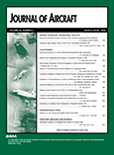
JOURNAL OF AIRCRAFT
Unraveling the Science of Flight.JOURNAL OF AIRCRAFT, published by the American Institute of Aeronautics and Astronautics, stands at the forefront of aerospace engineering research, serving as a critical resource for researchers, professionals, and students in the field. With a proud publication history dating back to 1964 and continuing through 2024, the journal has established itself as a leading forum for innovative studies and advancements in aircraft design, technology, and utilization. Notably, it holds a prestigious Q1 ranking in Aerospace Engineering and is positioned at the 75th percentile among its peers. As a non-open access publication, it offers a subscription-based model, ensuring high-quality content disseminated to a discerning audience. The ISSN 0021-8669 and E-ISSN 1533-3868 provide easy reference for those seeking to engage with pioneering research in aviation and aircraft systems. Researchers and practitioners alike will find valuable insights and comprehensive analyses in this esteemed journal that continually shapes the development of the aerospace industry.

International Journal of Turbomachinery Propulsion and Power
Transforming ideas into innovations in propulsion technology.The International Journal of Turbomachinery Propulsion and Power, published by MDPI, is a pivotal scholarly platform devoted to advancing the field of turbomachinery, propulsion technology, and power systems. Since its inception in 2016, this open-access journal has provided an invaluable resource for researchers, professionals, and students within the realms of Aerospace Engineering, Energy Engineering, and Mechanical Engineering. With its current ranking in the Q3 category across these disciplines and its strategic placement in Scopus, the journal facilitates the dissemination of cutting-edge research findings and innovative solutions. The commitment to open access, effective from 2017, ensures that high-quality research is readily accessible, fostering collaboration and knowledge sharing in the global academic community. As it continues to expand its scope through 2024, the journal remains a crucial avenue for discussion, experimentation, and advancement in turbomachinery and energy-related studies.
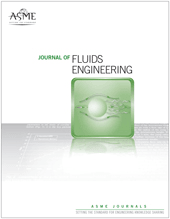
JOURNAL OF FLUIDS ENGINEERING-TRANSACTIONS OF THE ASME
Advancing Knowledge in Mechanical EngineeringJOURNAL OF FLUIDS ENGINEERING-TRANSACTIONS OF THE ASME, published by the renowned American Society of Mechanical Engineers (ASME), stands as a pivotal platform for disseminating cutting-edge research in the field of mechanical engineering, specifically focusing on fluid mechanics and its diverse applications. With an established history dating back to 1897, this journal features research that pushes the boundaries of knowledge and technology in areas such as fluid dynamics, thermal engineering, and hydrodynamics. Although it is not an open-access journal, it maintains rigorous peer-review standards, ensuring the publication of high-quality scholarly articles that contribute to the academic and professional community. In the latest rankings, it holds a respectable position within the Q2 category of mechanical engineering journals, reflecting its significant impact, as evidenced by its Scopus rank of #204 out of 672, placing it in the 69th percentile. Researchers, professionals, and students alike will find this journal to be a vital resource for the latest developments and innovative insights in fluids engineering.
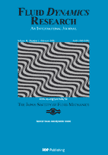
FLUID DYNAMICS RESEARCH
Innovating Research in Fluid Dynamics and BeyondFLUID DYNAMICS RESEARCH, published by IOP Publishing Ltd, is a pivotal journal dedicated to advancing the understanding of fluid dynamics through interdisciplinary research that spans several domains including mechanical engineering and physics. With an ISSN of 0169-5983 and E-ISSN 1873-7005, this journal provides a vital platform for researchers aiming to disseminate new findings and theoretical advancements in fluid flow and transfer processes. As of 2023, FLUID DYNAMICS RESEARCH holds a commendable position within the academic community, ranked Q3 in fluid flow and transfer processes, mechanical engineering, and miscellaneous physics and astronomy categories. The journal showcases a diverse array of articles that not only inspire collaboration among professionals and students but also ensure that theoretical and experimental studies are accessible for further development in the field. Operating from the United Kingdom, the journal offers a unique opportunity for scholars worldwide to contribute to the vibrant community dedicated to understanding the complexities of fluid dynamics, even as it anticipates converging its years of research from 1986 to 2024.
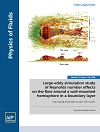
PHYSICS OF FLUIDS
Exploring the Dynamics of Fluids with PrecisionPHYSICS OF FLUIDS is a premier journal published by AIP Publishing that serves as a vital resource for the fluid mechanics community. With an impressive impact factor and a consistent ranking in the Q1 quartile across multiple related disciplines—including Computational Mechanics, Condensed Matter Physics, Fluid Flow and Transfer Processes, Mechanical Engineering, and Mechanics of Materials—this journal is renowned for disseminating high-quality research in the dynamic field of fluid dynamics. Covering a wide range of topics, from fundamental fluid mechanics to advanced computational modeling, PHYSICS OF FLUIDS plays a crucial role in advancing understanding and fostering innovation in both academic and industrial applications. With its strong reputation and significant readership, this journal is essential for researchers, professionals, and students seeking to stay updated on the latest developments in fluid physics.

AIAA JOURNAL
Exploring the Frontiers of Flight and Space TechnologyAIAA JOURNAL, published by the American Institute of Aeronautics and Astronautics, stands as a premier peer-reviewed platform for cutting-edge research in the field of aerospace engineering. With an esteemed Q1 classification in the Aerospace Engineering category and a notable rank within the top 20% of its field according to Scopus, this journal has become an essential resource for researchers, professionals, and students alike. Spanning over six decades of impactful scholarship from 1963 to 2024, the AIAA JOURNAL contributes significantly to the advancement of aerospace technologies and methodologies. While it does not offer open access, its rigorous editorial standards and impactful articles ensure that it remains a vital source for those seeking to stay at the forefront of aerospace innovation. Explore the rich tradition of excellence and stay informed on the latest discoveries that shape the world of flight and space exploration.
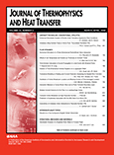
JOURNAL OF THERMOPHYSICS AND HEAT TRANSFER
Unlocking the Secrets of Thermal DynamicsJOURNAL OF THERMOPHYSICS AND HEAT TRANSFER, published by the American Institute of Aeronautics and Astronautics, serves as a vital platform for the dissemination of cutting-edge research in the fields of thermophysics and heat transfer. With an ISSN of 0887-8722 and an E-ISSN of 1533-6808, this journal has been pivotal in enhancing our understanding of heat transfer mechanisms since its inception in 1987, continuing through 2024. It occupies a noteworthy position in various academic categories, boasting Q2 rankings in both Fluid Flow and Transfer Processes and Mechanical Engineering, reflecting its significant contribution to the engineering and physical sciences community. Although it currently does not offer Open Access options, the journal’s repository of rigorous peer-reviewed articles remains accessible to researchers, professionals, and students eager to expand their knowledge and apply innovative findings in aerospace, condensed matter physics, and planetary sciences. Emphasizing both theoretical and experimental approaches, the JOURNAL OF THERMOPHYSICS AND HEAT TRANSFER remains an indispensable resource for advancing the frontiers of engineering and applied sciences.
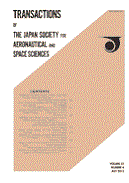
TRANSACTIONS OF THE JAPAN SOCIETY FOR AERONAUTICAL AND SPACE SCIENCES
Bridging Theory and Practice in AeronauticsTRANSACTIONS OF THE JAPAN SOCIETY FOR AERONAUTICAL AND SPACE SCIENCES is a distinguished journal published by the Japan Society for Aeronautical and Space Sciences, focusing on the latest advancements and research in the fields of aerospace engineering and space and planetary science. With a broad range covering theoretical studies, practical applications, and experimental research, this journal serves as a vital platform for researchers, professionals, and students keen to explore the intricacies of aeronautics and space technologies. Although currently closed to open access, the journal maintains a significant presence in the academic community, boasting a 2023 Scopus ranking of Q3 in both of its respective fields and offering insights that contribute to ongoing discussions and innovations in aerospace. Since its inception in 1969 and with publications extending to 2024, the journal not only reflects the evolving landscape of aeronautics and space sciences but also encourages discourse that paves the way for future breakthroughs. For your engagement and contributions to this dynamic field, the TRANSACTIONS OF THE JAPAN SOCIETY FOR AERONAUTICAL AND SPACE SCIENCES stands as an essential resource.

Flow
Fostering collaboration for groundbreaking discoveries.Flow is a premier open access journal published by Cambridge University Press, dedicated to advancing research in the fields of Aerospace Engineering, Biomedical Engineering, and Fluid Flow and Transfer Processes. Launched in 2021, Flow has rapidly gained recognition and has achieved a prestigious Q1 ranking in its categories for 2023, underscoring its influential role in disseminating high-quality research. With an emerging impact factor and a strong commitment to accessibility, the journal provides a crucial platform for researchers, professionals, and students to share innovative findings and foster collaboration across disciplines. Flow is headquartered in the United Kingdom and is part of Cambridge University's effort to promote scholarly communication that transcends traditional barriers. Whether you are looking to submit your work or explore cutting-edge studies in your field, Flow offers a dynamic and rigorous environment for intellectual exchange.
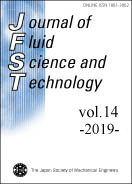
Journal of Fluid Science and Technology
Transforming Mechanical Engineering Through Fluid InsightsThe Journal of Fluid Science and Technology, published by the Japan Society of Mechanical Engineers, serves as a pivotal platform for the dissemination of cutting-edge research in the fields of fluid mechanics and mechanical engineering. With an ISSN of 1880-5558, this Open Access journal has been dedicated to advancing the understanding of fluid flow and transfer processes since its establishment. As of 2023, it holds a significant position with a Q3 quartile ranking in both Fluid Flow and Transfer Processes and Mechanical Engineering categories. Researchers and practitioners are encouraged to explore the journal’s extensive collection of articles, contributing to the body of knowledge that impacts various practical applications in engineering and technology. The journal, which has established a reputation for quality amidst a competitive landscape, further fosters international collaboration and education by providing unrestricted access to its content. For professionals and students alike, the Journal of Fluid Science and Technology represents an invaluable resource for the latest findings and innovations in fluid dynamics and mechanical systems.